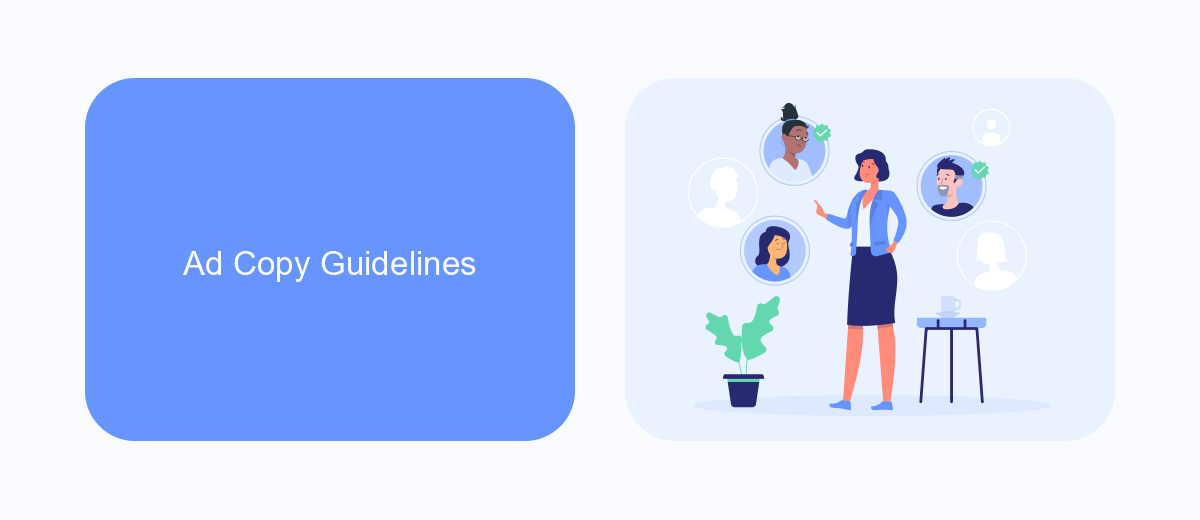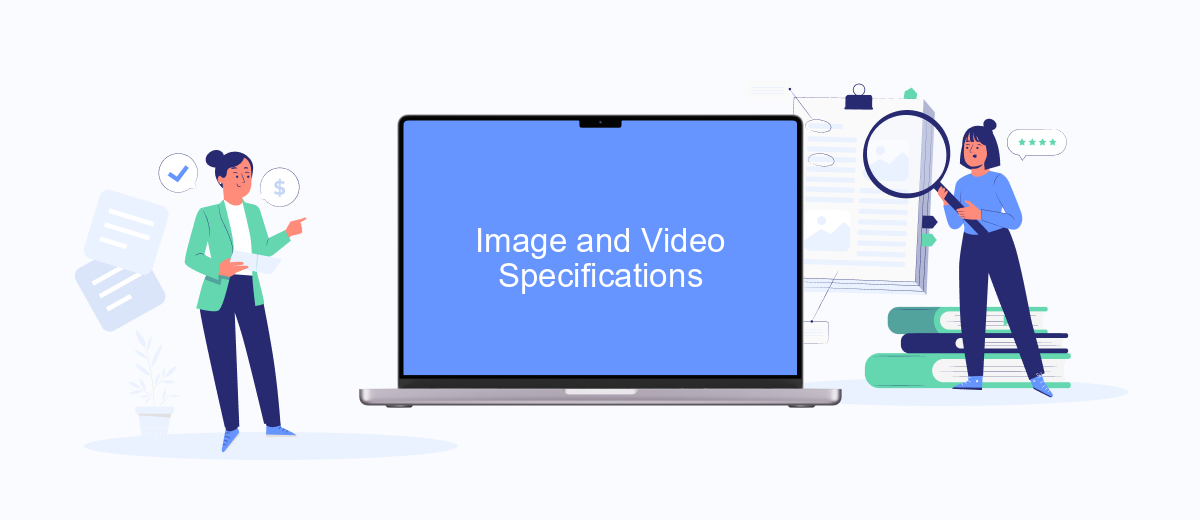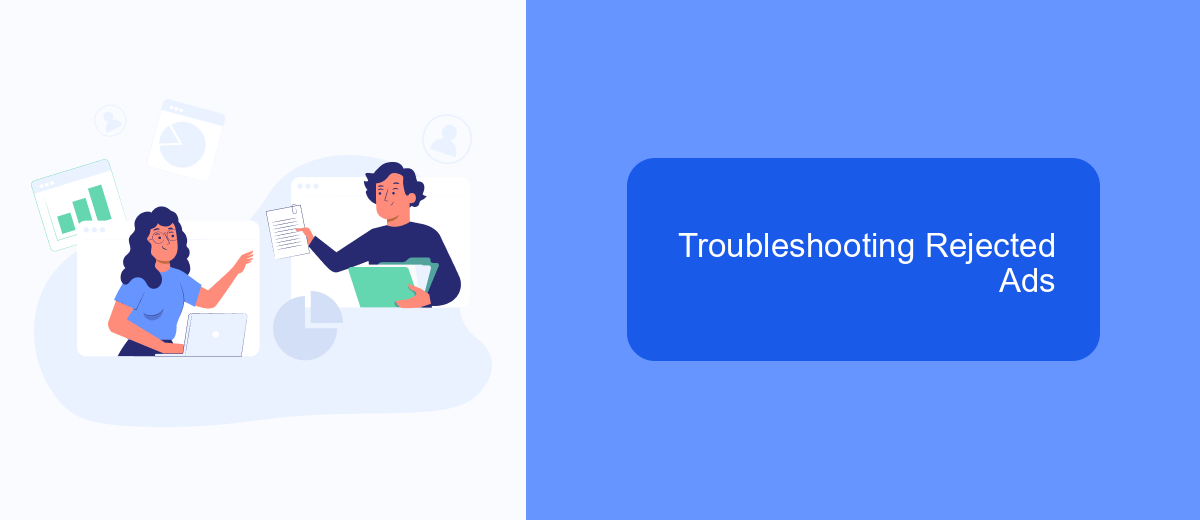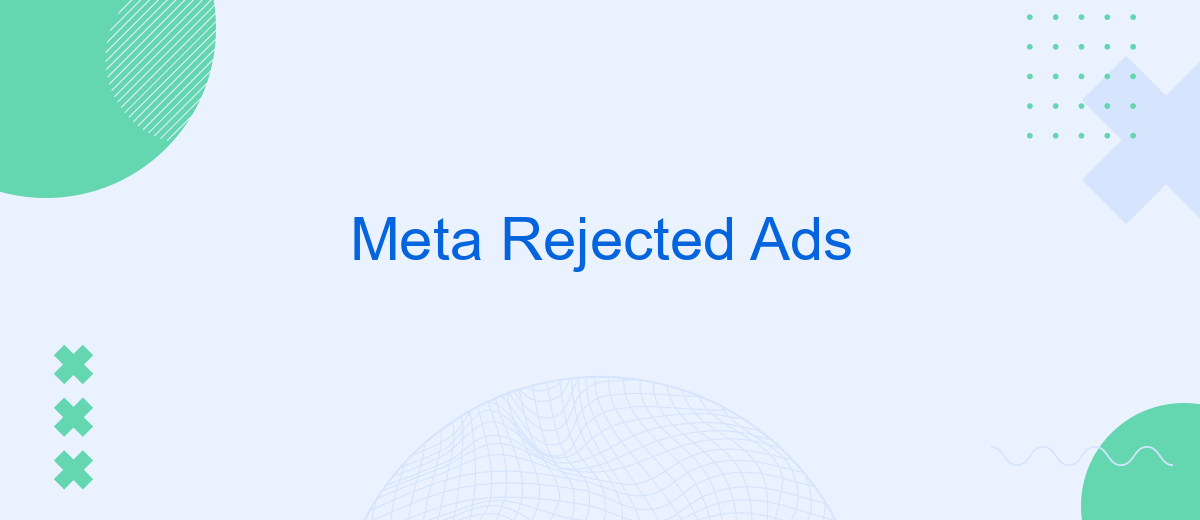In the ever-evolving landscape of digital advertising, Meta has implemented stringent guidelines to ensure quality and compliance. However, many businesses find their ads rejected, often without clear explanations. This article delves into the common reasons behind Meta's ad rejections, offering insights and actionable tips to help advertisers navigate the complexities and enhance their ad approval rates.
Meta Ad Rejection Causes
Understanding the causes behind Meta ad rejections is crucial for optimizing your advertising strategy. Ads can be rejected for various reasons, which can be broadly categorized into policy violations, content issues, and technical errors.
- Policy Violations: Ads that do not comply with Meta's advertising policies, such as those promoting prohibited products or services, misleading content, or inappropriate targeting.
- Content Issues: Ads containing offensive, misleading, or irrelevant content. This includes the use of inappropriate language, images, or videos.
- Technical Errors: Issues such as improper formatting, broken links, or incorrect ad specifications can lead to rejections.
To avoid these issues, it's essential to review Meta's advertising policies regularly and ensure your ads meet all guidelines. Utilizing services like SaveMyLeads can streamline the integration of your ad campaigns, ensuring compliance and reducing the likelihood of rejections. By addressing these common causes, you can improve your ad approval rates and enhance your overall marketing effectiveness.
Ad Copy Guidelines

Creating effective ad copy for Meta platforms requires adherence to specific guidelines to ensure your ads are not rejected. Firstly, your copy should be clear, concise, and directly related to the product or service you are promoting. Avoid using misleading information or exaggerated claims, as this can lead to disapproval. Additionally, refrain from using prohibited content such as adult material, discriminatory language, or misleading financial products. It's also important to ensure that your ad copy complies with Meta’s community standards and advertising policies, which can be found on their official website.
Moreover, the use of proper grammar and punctuation is essential to maintain professionalism and credibility. If your ad involves integrations or third-party services, such as using SaveMyLeads to automate your marketing processes, make sure to clearly explain the benefits and functionalities without making unrealistic promises. This approach not only aligns with Meta's guidelines but also helps in building trust with your audience. Always review your ad copy thoroughly before submission to minimize the risk of rejection and ensure a smooth approval process.
Image and Video Specifications

When creating ads for Meta platforms, adhering to specific image and video specifications is crucial to ensure your ads are approved and perform optimally. Properly formatted visuals not only comply with Meta's guidelines but also enhance user engagement.
- Image resolution: Minimum 1080 x 1080 pixels.
- Aspect ratio: 1:1 for images and 4:5 for videos.
- File formats: JPEG or PNG for images, MP4 or MOV for videos.
- Video duration: Up to 15 seconds for Stories and 60 seconds for feed ads.
- File size: Images up to 30MB, videos up to 4GB.
- Text overlay: No more than 20% of the image area.
Using the SaveMyLeads service can streamline your ad creation process by integrating your existing tools and automating data transfers. This ensures that your ads meet Meta's specifications and are updated in real-time, reducing the risk of rejections and improving overall campaign efficiency.
Troubleshooting Rejected Ads

If your ad on Meta has been rejected, the first step is to understand the reason behind the rejection. Check the notification from Meta, which often provides specific details on why the ad was not approved. Common reasons include violating Meta's advertising policies, such as inappropriate content, misleading claims, or incorrect targeting.
Once you have identified the issue, you can take corrective actions. Review your ad content and make necessary adjustments to comply with Meta's guidelines. Ensure that your ad copy, images, and targeting settings meet the platform's standards.
- Check for any prohibited content or language.
- Ensure your landing page is relevant and functional.
- Verify that your ad complies with Meta's targeting policies.
- Consider using SaveMyLeads to streamline the process and ensure your ads meet all requirements.
After making the necessary changes, resubmit your ad for review. If you believe your ad was wrongly rejected, you can also request a review from Meta. Persistence and attention to detail will help you get your ads approved and running smoothly.
- Automate the work with leads from the Facebook advertising account
- Empower with integrations and instant transfer of leads
- Don't spend money on developers or integrators
- Save time by automating routine tasks
Alternative Ad Platforms
When Meta rejects your ads, it's essential to explore alternative ad platforms to maintain your marketing momentum. Platforms like Google Ads, LinkedIn Ads, and Twitter Ads offer unique targeting options and can help you reach different segments of your audience. Each platform has its own strengths; for example, Google Ads excels in search intent targeting, while LinkedIn Ads are great for B2B marketing. Diversifying your ad spend across multiple platforms can also reduce dependency on a single source and mitigate risks associated with ad rejections.
Integrating these alternative platforms into your marketing strategy can be streamlined with tools like SaveMyLeads. This service allows you to automate lead data transfers between various ad platforms and your CRM, ensuring that no potential customer falls through the cracks. By leveraging such automation tools, you can focus more on optimizing your ad campaigns and less on manual data entry, thereby enhancing efficiency and effectiveness in your marketing efforts.
FAQ
Why was my ad rejected by Meta?
How can I appeal a rejected ad on Meta?
What are some common reasons for ad rejection on Meta?
Can automation tools help prevent ad rejections on Meta?
How can I ensure my future ads are not rejected by Meta?
Would you like your employees to receive real-time data on new Facebook leads, and automatically send a welcome email or SMS to users who have responded to your social media ad? All this and more can be implemented using the SaveMyLeads system. Connect the necessary services to your Facebook advertising account and automate data transfer and routine work. Let your employees focus on what really matters, rather than wasting time manually transferring data or sending out template emails.

